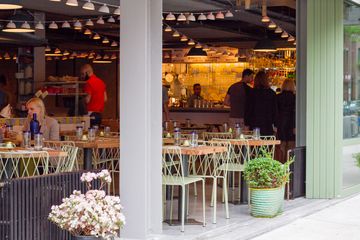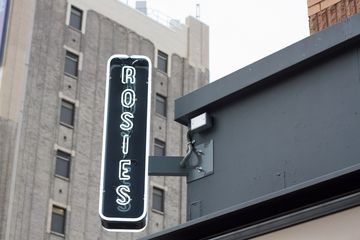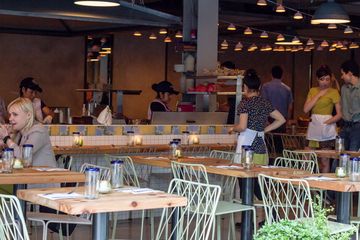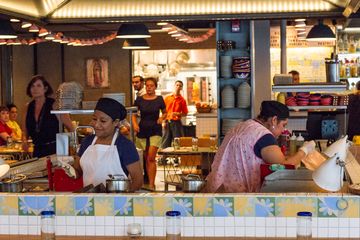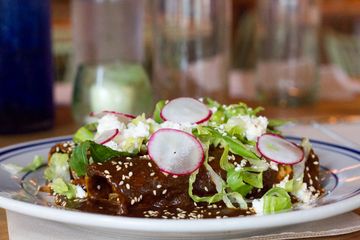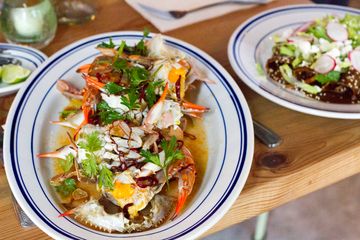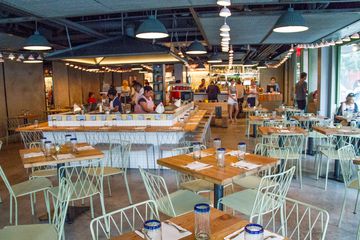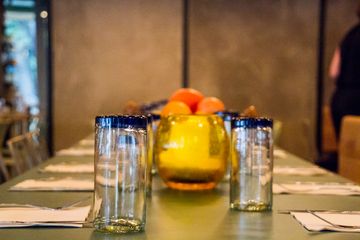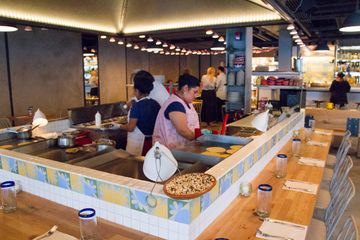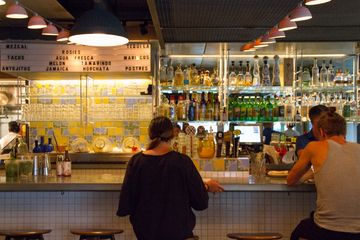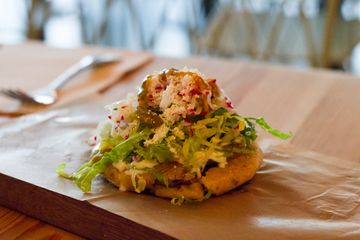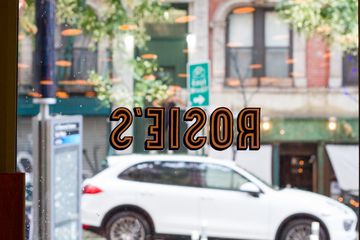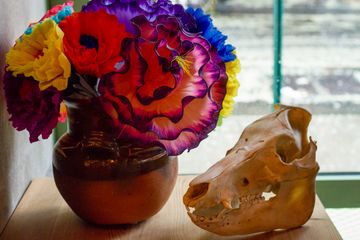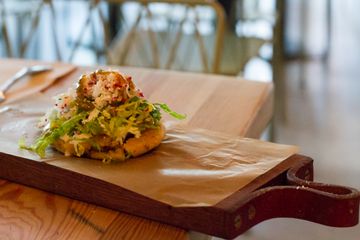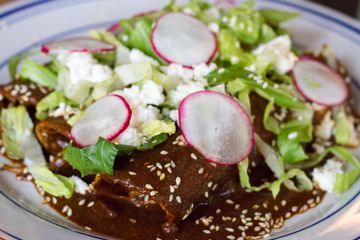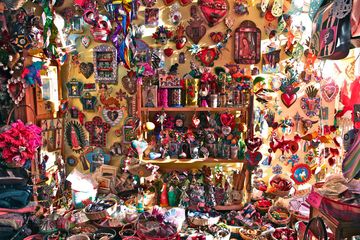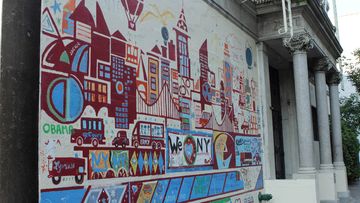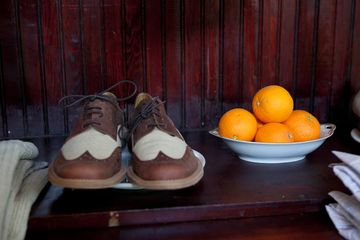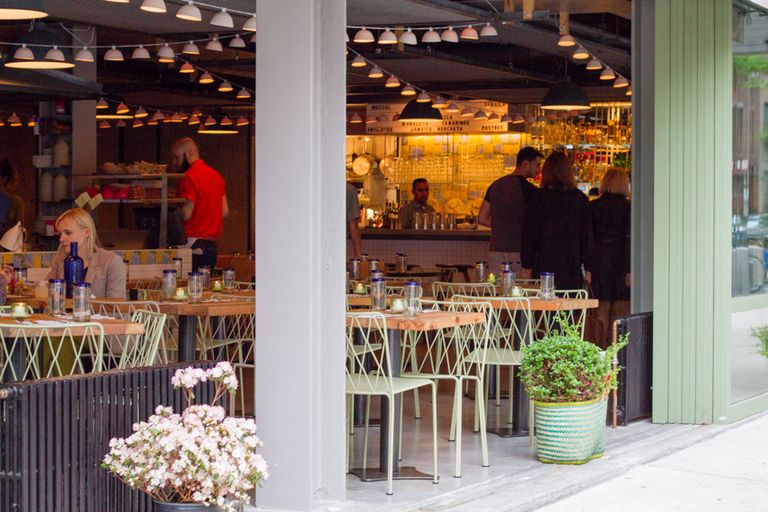
There is no over-the-top, Tex-Mex red and green here. Instead, string lighting and wire deck chairs give the entire restaurant a patio feel, and the nods to Mexico are subtle and tasteful: tables set with blue-rimmed glasses like the ones I have seen on trips to the country, and a bar at the back with row upon row of tequila and mezcal.
Rosie’s is the latest from restaurateurs Marc Meyer and Vicki Freeman, known for their other ventures like Cookshop and Vic’s. When I stopped by in July of 2015, Rosie’s had been open just over three months, though Anna Marie, the General Manager, said “strangely, we feel like we’ve been here longer. It’s a comfortable feeling.” I asked her to tell me about her experience with the new restaurant so far, and she told me how lucky she felt to be in the area. “I love the neighborhood,” she explained, “one of our goals coming here was to become part of the community.”
“We’ve really tried to bring Mexico to New York,” Anna Marie continued. Owner Marc Meyer had been travelling to Mexico for years, and so opening Rosie’s was a dream come true for the chef. “He just has such a respect for the cuisine,” Anna Marie added. Of course, in order to bring authentic Mexican to Manhattan, a great deal of research was required. “We all went to Veracruz last August to do more research on the seafood side,” Anna Marie recalled. The research certainly paid off. Members of the Sideways Team were blown away by the Cangrejo al Ajillo, a pan roasted blue crab served with guajillo chile, garlic, lime, and olive oil.
Besides such astonishingly fresh seafood, another tradition that Rosie’s brings straight from Mexico is the Comal – the centerpiece of the dining area is a circular, tiled bar where women prepare tortillas by hand. “Our Comal Bar is a tribute to the ladies on the streets in Mexico,” Anna Marie told me. There, the women grind their own corn to make the masa needed for corn tortillas. At Rosie’s, the corn is imported directly from Mexico, and ground downstairs, so that the first thing customers smell when they enter the restaurant is the fresh cornmeal. The women who make the masa into tortillas wear traditional comal aprons sewn from fabric that Marc Meyer and his team brought back from one of their trips. It is just one more touch of authenticity to accompany the restaurant’s delicious food.
While the menu at Rosie’s does not focus on a particular region of Mexico, it acts as a travelogue of sorts, a collection of recipes inspired by Marc’s journeys there, and the culinary experiences that the country holds. The enchiladas are served in traditional style, with an aromatic mole sauce, and of course, everything comes with freshly-made tortillas. “The chefs – you get an air of such pride from them,” Anna Marie exclaimed. “They feel celebrated, and that makes me happy.”
